Armchair Travel in France with Robert Louis Stevenson
Known for his classic novels like Treasure Island and Dr. Jekyll and Mr. Hyde, Robert Louis Stevenson was an adventurer. Born into a family of lighthouse designers in Scotland, as a young man he longed to see the wider world. As he put it,
“I have been after an adventure all my life, a pure adventure, such as befell early and heroic voyagers.”
His first great adventure was in France, in the wild and rugged region known as the Cévennes. At the age of 27 he made his way to the tiny village of Le Monastier, about 70 miles west of Valence in southern France. There he gathered (too many) provisions, had a sleeping bag sewn together so he could camp in the rough, and bought a donkey named Modestine. Then he set out—admittedly, not really knowing what he was doing—on a 12-day march into the unknown.

Travels With a Donkey in the Cévennes
Stevenson’s memoir of this adventure, Travels With a Donkey in the Cévennes, became a best seller and launched his literary career. It’s a delightful little book, about 150 pages—a charming romp through the French countryside. It remains so well known that hikers today still follow in Stevenson’s footsteps. For those of us who are home-bound at the moment, reading this book is a lovely form of escapism and a way to discover a new part of France.
Modestine, as Stevenson quickly learns, has a mind of her own and is in no hurry to get anywhere. She’s happy to stop by the side of the road and munch whatever looks tasty. Stevenson also discovers that he has no idea how to pack a donkey, loading his overstuffed bags in a high, unstable pile that regularly topples over and spills his belongings on the road, much to the amusement of passersby. Eventually he learns to pack properly and discards some of his excess belongings—who really needs an egg whisk, anyway?
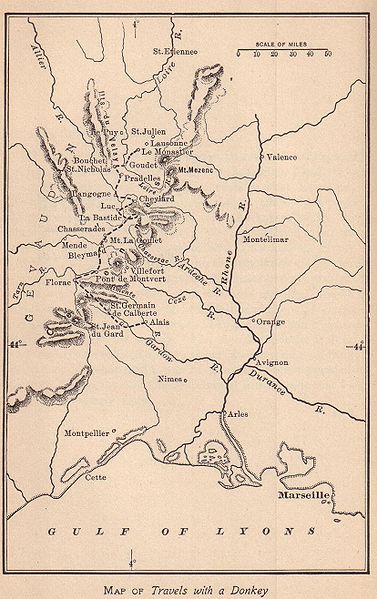
Map of the Cévennes. Public Domain
Stevenson also learns that he is not very good at finding his way around, especially in wild countryside where paths tend to peter out in the middle of nowhere. But he takes it all in good spirits, because this is exactly what he has been looking for:
“I travel not to go anywhere, but to go. I travel for travel’s sake. The great affair is to move; to feel the needs and hitches of our life more nearly; to come down off the featherbed of civilization, and find the globe granite underfoot and strewn with cutting flints.”
From time to time, Stevenson passes small villages where he stops for the night, enjoying the company of strangers over simple meals. He spends one night in a Trappist monastery, where the monks are delighted to talk to him—their vow of silence is lifted when welcoming travelers.
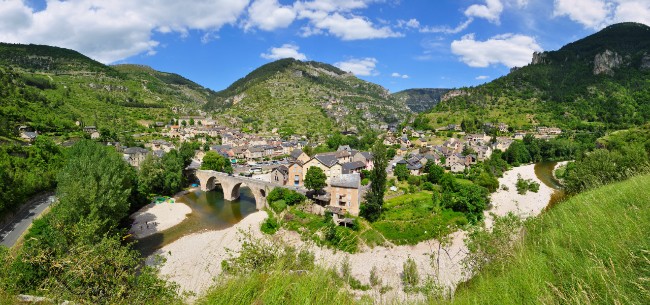
The little village of Sainte-Enimie (Lozère, France) at the entrance of the Gorges du Tarn, seen from a picnic area on D986 road, part of the Stevenson Trail. Photo: Wikimedia Commons
Along the way, Stevenson learns the bitter history of the area, with many scars still fresh from the French Wars of Religion between Catholics and Protestants. Being a Scottish Protestant himself, he feels a certain sympathy for one side, but still wonders at the need for conflict:
“Thus, to the high entertainment of the angels, do we pelt each other with evangelists, like schoolboys bickering in the snow.”
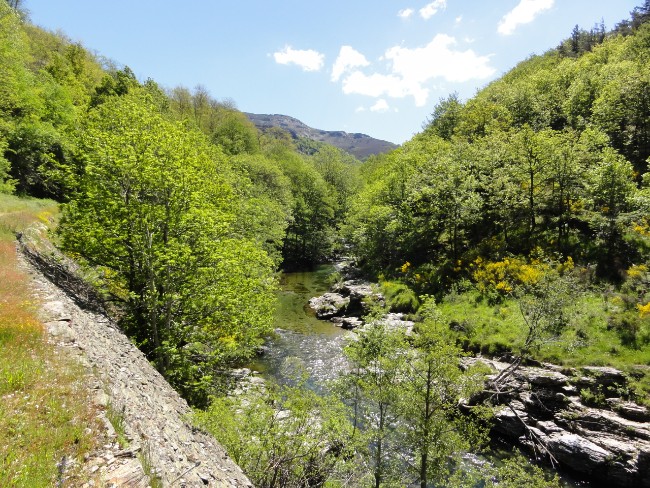
Chemin de Stevenson. Photo: Wikimedia Commons
Travels With a Donkey is filled with beautiful descriptions of the Cévennes countryside, its hills and forests and rivers, its ruined castles dotting the hillsides. My favorite passage describes a night camping in the middle of a wood:
“The stars were clear, colored, and jewel-like…all around me the black fir-points stood upright and stock-still. A faint wind, more like a moving coolness than a stream of air, passed down the glade from time to time; so that even in my great chamber the air was being renewed all night long….The outer world, from which we cower into our houses, seemed after all a gentle habitable place; and night after night a man’s bed, it seemed, was laid and waiting for him in the fields, where God keeps an open house.”

On the Stevenson path near the Mirandol viaduct above Chassezac, commune of Chasseradès on the montagne du Goulet. Photo: Wikimedia Commons
At the end of the hike, at St Jean du Gard, Stevenson parted with Modestine and was surprised by how emotional he became. “We had been fast companions,” he wrote, “and now farewell forever.” In the stagecoach leaving town, in the company of strangers, Stevenson wept.
The Stevenson Trail
Today the Chemin de Stevenson is a popular hike, a 10-14 day route that can easily be walked in smaller chunks. It follows Stevenson’s path through some of France’s most beautiful and unspoiled countryside. For those interested in learning more, this listing from Walkopedia will get you started.
Purchase the book at your local independent bookstore or on Amazon below:
Share to: Facebook Twitter LinkedIn Email
Leave a reply
Your email address will not be published. Required fields are marked *

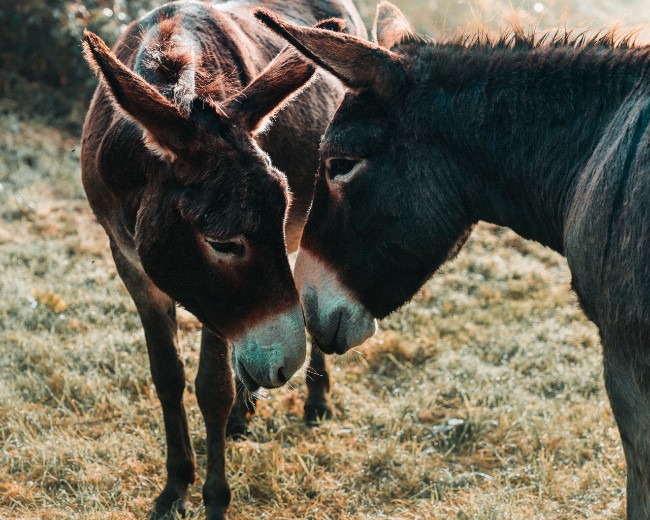



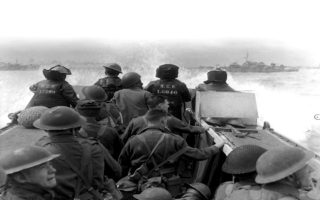
REPLY
REPLY